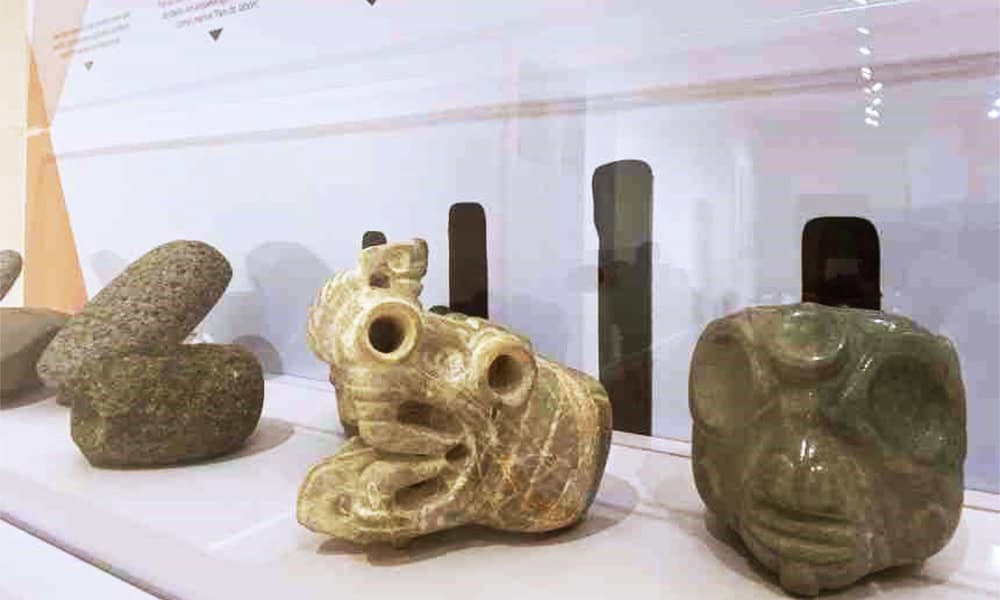Artifacts discovered in the ancient soils of Costa Rica, including some of the oldest known jades, are now on display, shedding light on the artistry and cultural connections of ancient societies. The archaeological sites of La Regla and Huiscoyol, near the Gulf of Nicoya, have yielded these artifacts, which date back approximately 2,400 years.
The exhibition “Much More Than Green,” recently inaugurated at the National Museum of Costa Rica, features these jades along with 165 other pre-Columbian artifacts. Running until March 2025, it showcases over 20 years of archaeological research.
Among the featured artifacts are human figures, musical instruments, cane tops, jade ornaments, restored clay pots, and stone metates, including a wooden one that is approximately 2,300 years old.
Jades are a central focus of the exhibition. Some pieces reveal their manufacture and possible uses, alongside associated artifacts found in burial tombs at Huiscoyol and La Regla. A selection of jades illustrates the exchange of objects between Mesoamerican cultures and those in Costa Rica, with jade work dating back to 1300 BC with the Olmec people in Mexico, arriving in Costa Rica around 600 BC.
The exhibition aims to provide context for jade artifacts and the research surrounding them. It highlights that artifacts from Huiscoyol and La Regla are made from various materials—known as “social jades”—including serpentines, jaspers, quartz, lutites, sandstones, and breccias, in addition to green jadeite.
Huiscoyol and La Regla are considered among the oldest known cemeteries in Costa Rican archaeology and are part of the underwater heritage. The Huiscoyol site features remains submerged due to an aquifer confined between layers of mud or clay. During summer, the water level drops, aiding excavation, although some remains stay submerged depending on depth.
La Regla’s burials are located in a marine flood zone, which restricts excavation to exceptionally low tides occurring twice a year. The narrow time window between tides, combined with soil saturation from brackish water, complicates the movement, observation, and excavation of cultural remains.
Exhibition hours are Tuesday through Saturday from 8:30 a.m. to 4:30 p.m. and Sundays from 9:00 a.m. to 4:30 p.m.








